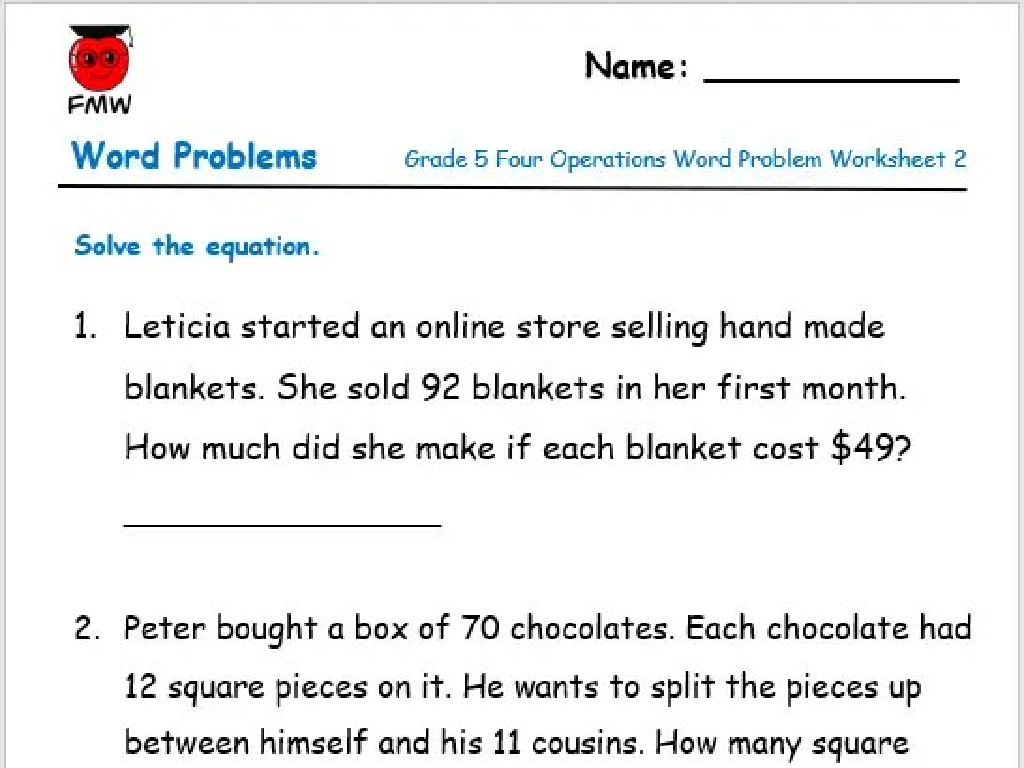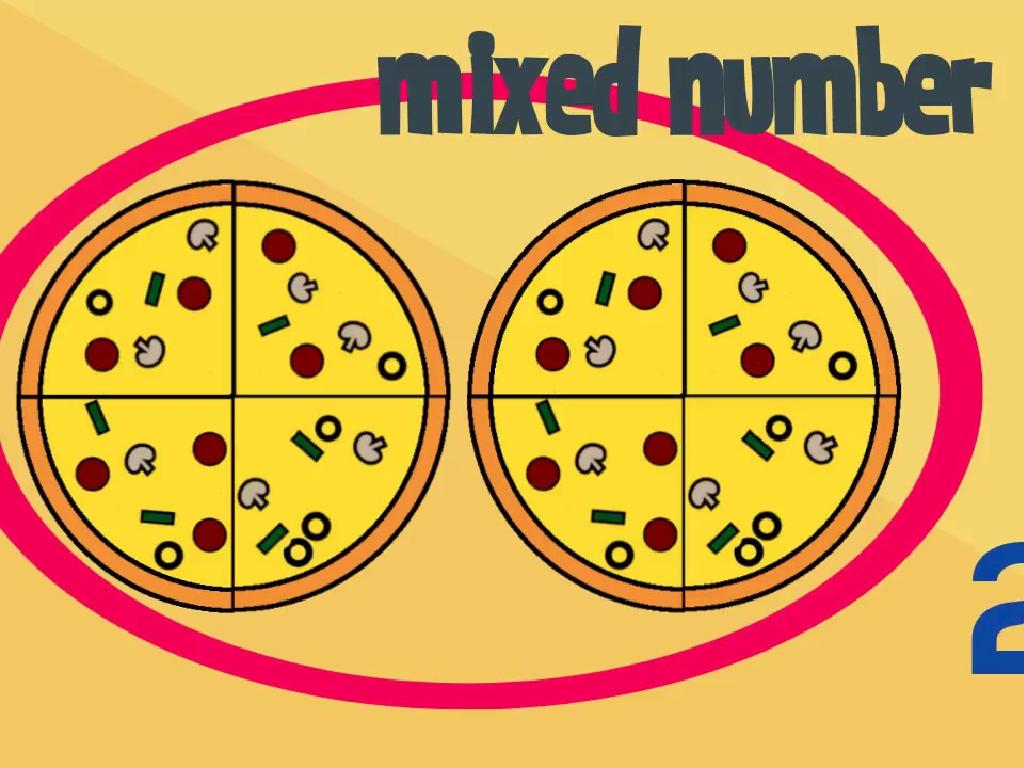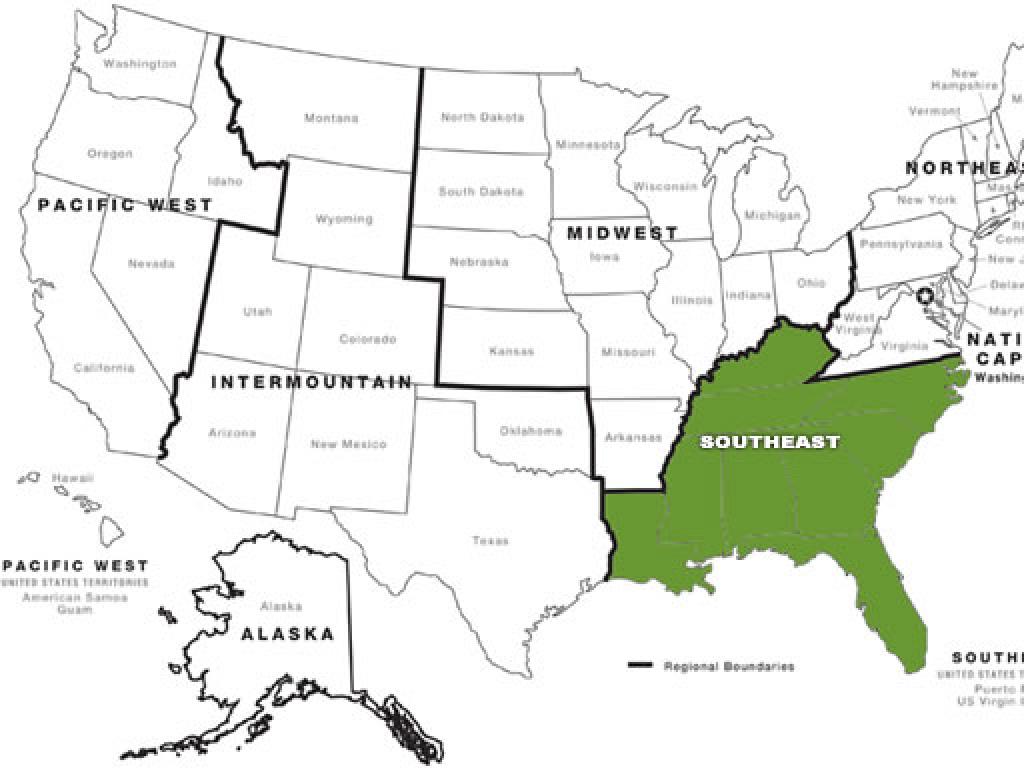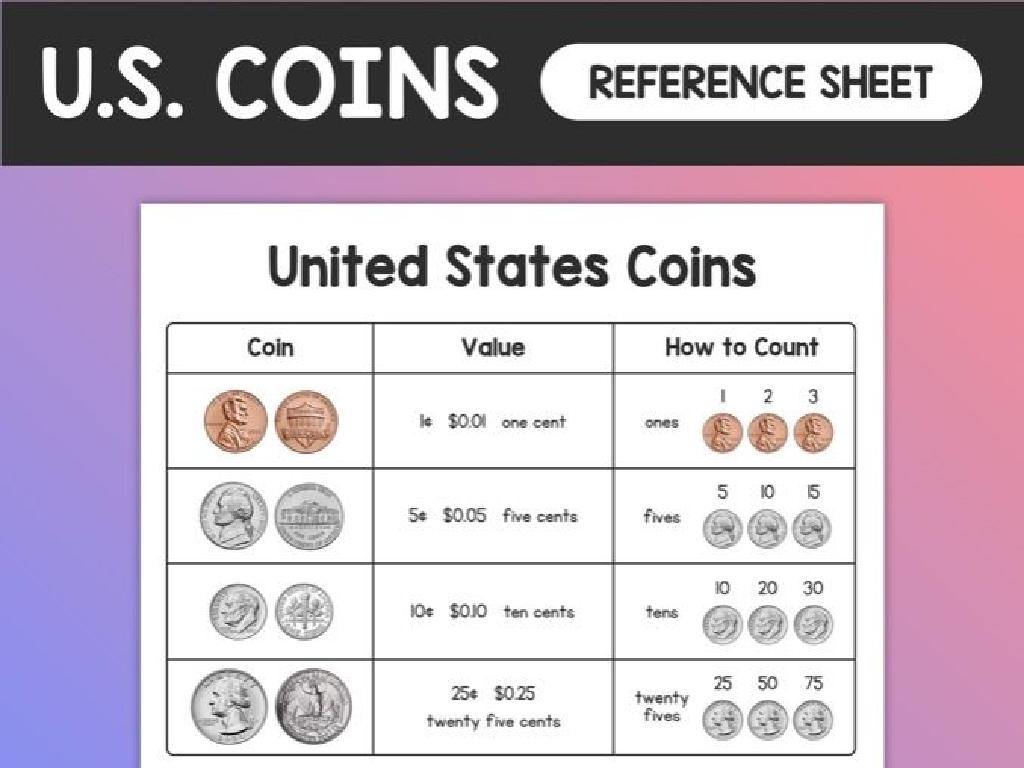Write Tens And Ones - Up To 20
Subject: Math
Grade: Kindergarten
Topic: Count Tens And Ones - Up To 20
Please LOG IN to download the presentation. Access is available to registered users only.
View More Content
Understanding Numbers: Tens and Ones
– Learn what tens and ones are
– Tens are groups of ten items, ones are single items
– Counting with tens and ones
– Use objects like blocks to count in groups of ten and single ones
– Practice counting up to 20
– Let’s count together using pictures and objects
– Fun activities to enjoy numbers
|
This slide introduces the concept of tens and ones, which is fundamental in understanding place value. Start by explaining that a ‘ten’ is a bundle of ten items, and ‘one’ is just a single item. Use visual aids like blocks or beads to group items into tens and ones. Practice counting with the class by grouping objects and counting them as tens and ones, up to 20. Incorporate fun activities such as counting colorful pictures or using toys to make the learning process enjoyable and engaging for Kindergarten students. The goal is to ensure that students can recognize and count tens and ones comfortably by the end of the lesson.
What Are Numbers?
– Numbers help us count
– Count toys, cookies, or friends
– Numbers are used daily
– We use numbers to tell time, age, and play games
– Numbers have different sizes
– From 1 little ant to 20 big elephants
– Learning numbers is fun!
|
This slide introduces the concept of numbers to Kindergarten students. Emphasize that numbers are tools we use to measure and compare things in our world. They are part of our daily lives, from telling time to counting how many cookies we have. Explain that numbers can represent small quantities like a single toy, or larger quantities up to 20 for this lesson. Engage the students with examples of counting familiar items and show that learning about numbers can be a fun and interactive experience. Encourage them to think of situations where they use numbers, like counting their age or playing games.
Understanding Tens and Ones
– Tens are bundles of ten
– Like a pack of ten crayons
– Ones are just single units
– Like a single crayon
– Combine tens and ones for numbers
– 10 crayons + 6 crayons = 16
– Making numbers up to 20
– Practice with numbers 1 to 20
|
This slide introduces the concept of tens and ones, which are the building blocks of our number system. Tens are groups of ten items, which can be visualized as a bundle or a pack, such as a pack of ten crayons. Ones are individual units, like a single crayon. By combining tens and ones, children can create different numbers. For example, ten crayons bundled together with six single crayons make the number sixteen. This concept helps children understand how numbers are formed and prepares them for addition and subtraction. Encourage the students to practice making numbers up to 20 using tens and ones, using physical objects like crayons or blocks to reinforce the concept.
Counting with Tens and Ones
– Group ten fingers as one ten
– Imagine ten fingers bunched together
– Add single fingers for ones
– Each extra finger is ‘one more’
– Create numbers 11 to 20
– 10 fingers + 1 finger = 11
– Practice with different numbers
– Try with 10 fingers + 2, 10 fingers + 3, etc.
|
This slide introduces the concept of grouping by tens and adding ones to form numbers 11 through 20. Start by having the students hold up ten fingers to represent ‘one group of ten.’ Then, add individual fingers to represent ‘ones.’ This visual and physical activity helps them understand how two-digit numbers are formed. Encourage the children to practice with different numbers within the 11-20 range, reinforcing the concept of tens and ones. This hands-on approach is particularly effective for Kindergarten students as it turns abstract concepts into tangible learning experiences.
Writing Numbers with Tens and Ones
– Write the tens, then the ones
– Example: 15 is 1 ten and 5 ones
– Like 15 has 1 group of ten blocks and 5 single blocks
– Practice with different numbers
– Try writing 12 as tens and ones
– Understand tens and ones
– Knowing this helps us count and add numbers easily
|
This slide introduces the concept of tens and ones, which is fundamental in understanding place value. Start by explaining that in two-digit numbers, the first digit represents the number of tens and the second digit represents the number of ones. Use visual aids like blocks or drawings to show groups of ten and individual ones. For the practice activity, provide various two-digit numbers and have students write them out as tens and ones, reinforcing the concept. This understanding is crucial for their future math skills, including addition and subtraction. Encourage students to use physical objects like blocks or counters to visualize the groups of tens and ones.
Let’s Practice Writing Tens and Ones!
– I’ll show you a number
– First count the tens
– If we see 15, we have 1 ten.
– Then count the ones
– After tens, we have 5 ones in 15.
– Practice makes us better!
|
This slide is for a class activity where the teacher will interact with the students by showing them numbers up to 20 and guiding them to write the numbers by identifying tens and ones. Start by showing a number, such as 15, and then demonstrate how to break it down into tens and ones. For example, in the number 15, there is one group of ten and five ones. Encourage the students to practice with different numbers to reinforce their understanding. The activity should be engaging and supportive, allowing students to gain confidence in their ability to recognize and write numbers in terms of tens and ones. Provide positive feedback and additional practice for those who need it.
Class Activity: Building Numbers with Blocks
– Use blocks to build numbers
– Long blocks equal ten
– Each long block stands for ‘ten’
– Small blocks equal one
– Each small block stands for ‘one’
– Partner up and create numbers
|
This activity is designed to help Kindergarten students visualize and understand the concept of tens and ones in a hands-on manner. Provide students with a set of blocks, ensuring there are enough long and small blocks for all. Demonstrate how to represent the number 10 with a long block and the number 1 with a small block. Then, guide them to use these blocks to build numbers up to 20. Encourage them to work in pairs to foster collaboration and discussion about the numbers they are creating. Possible activities include: building the highest number they can, matching block combinations to written numbers, or even a ‘block challenge’ where you call out a number and they race to build it. This will help solidify their understanding of place value and the base-ten system.
Congratulations on Learning Tens and Ones!
– You’ve learned about tens and ones
– Now you can count up to 20
– Practice makes perfect
– Try counting objects around the house
– Share your knowledge at home
– Teach your family how to count with tens and ones
|
This slide is a celebration of the students’ achievement in understanding the concept of tens and ones. It’s important to acknowledge their progress and encourage them to continue practicing. Remind them that they can now confidently count and write numbers up to 20, which is a big step in their mathematical journey. Suggest fun activities for practice, like counting toys, snacks, or steps. Encourage them to involve their family members in their practice, which can help reinforce their learning and allow them to demonstrate their new skills.






